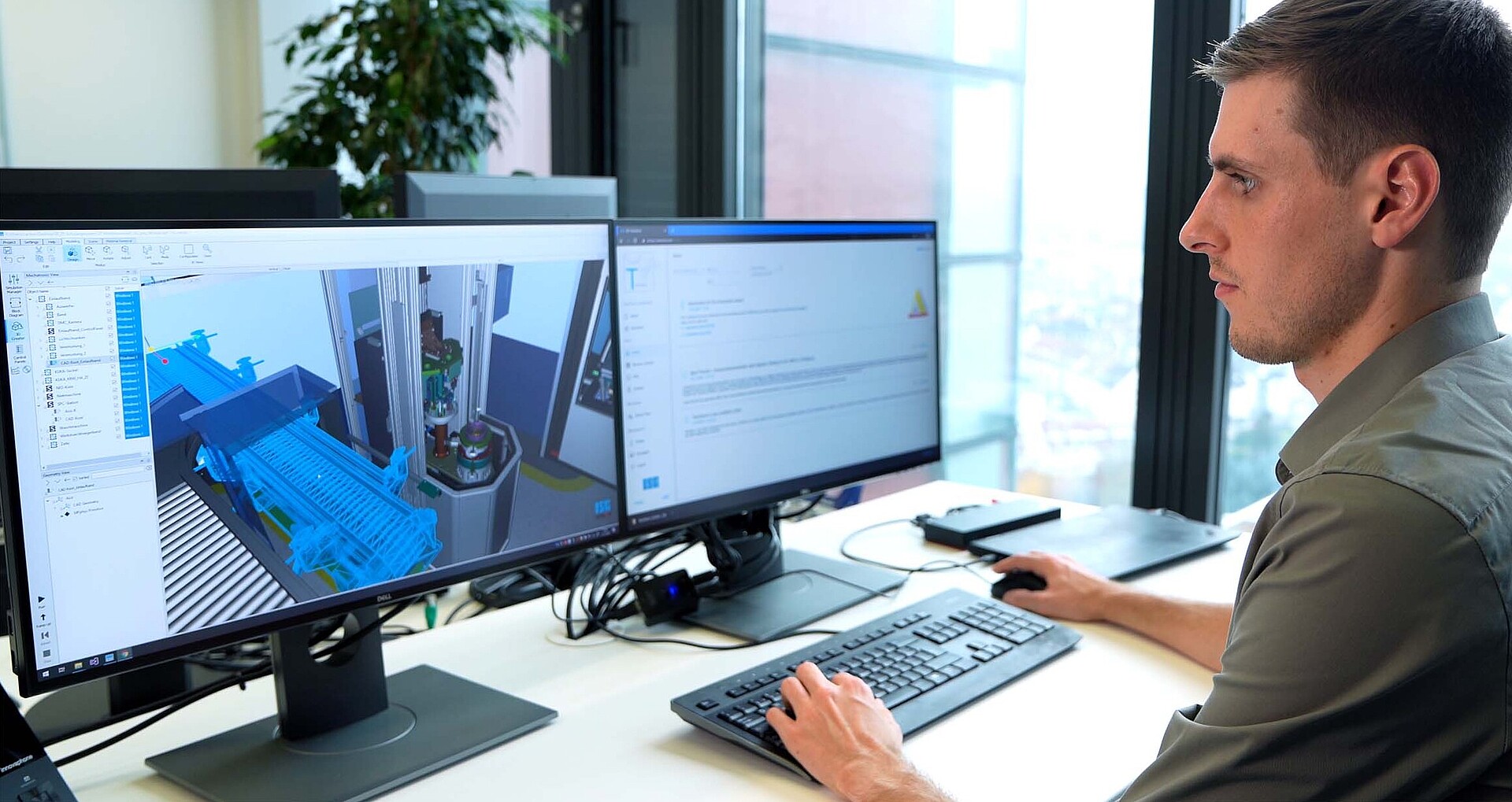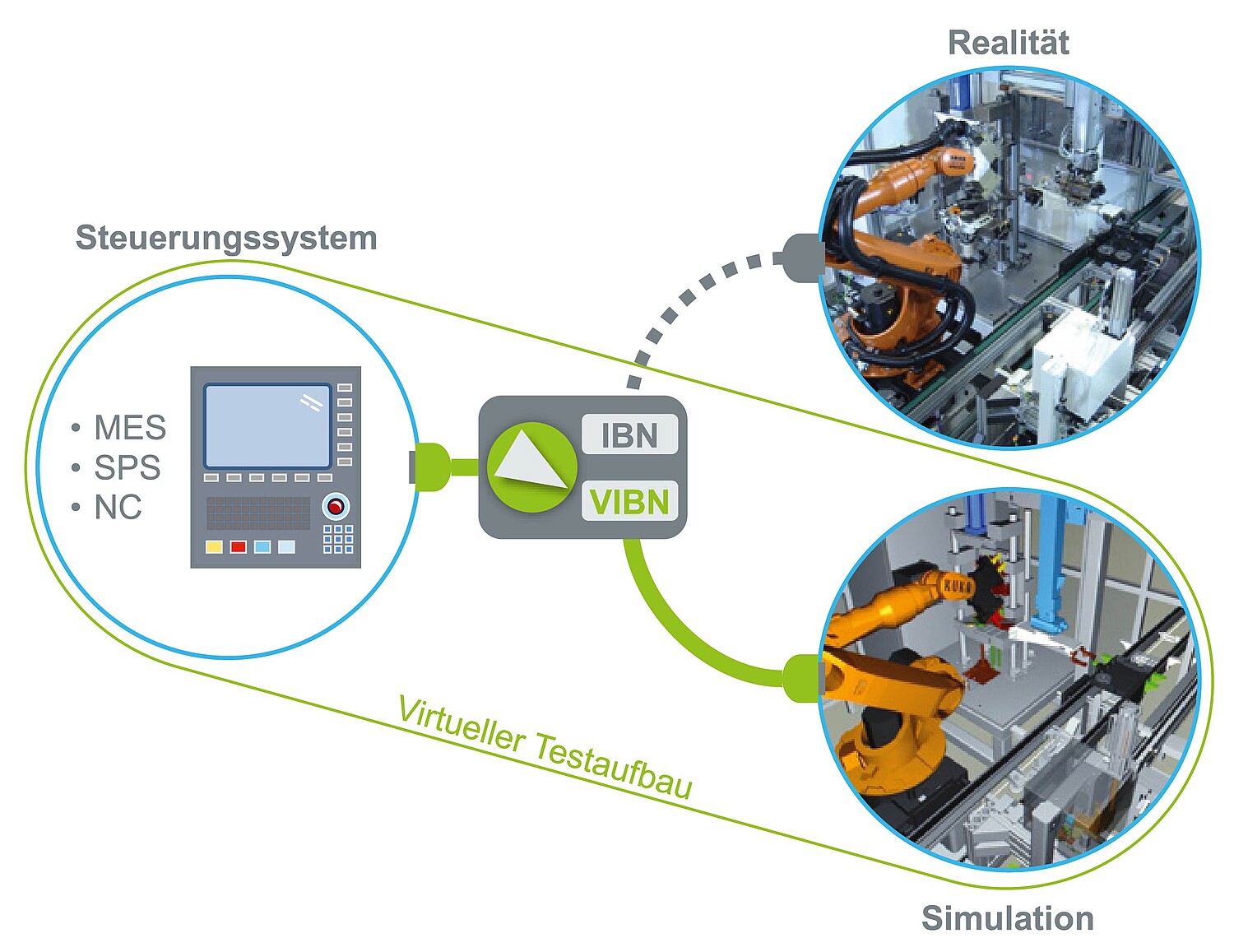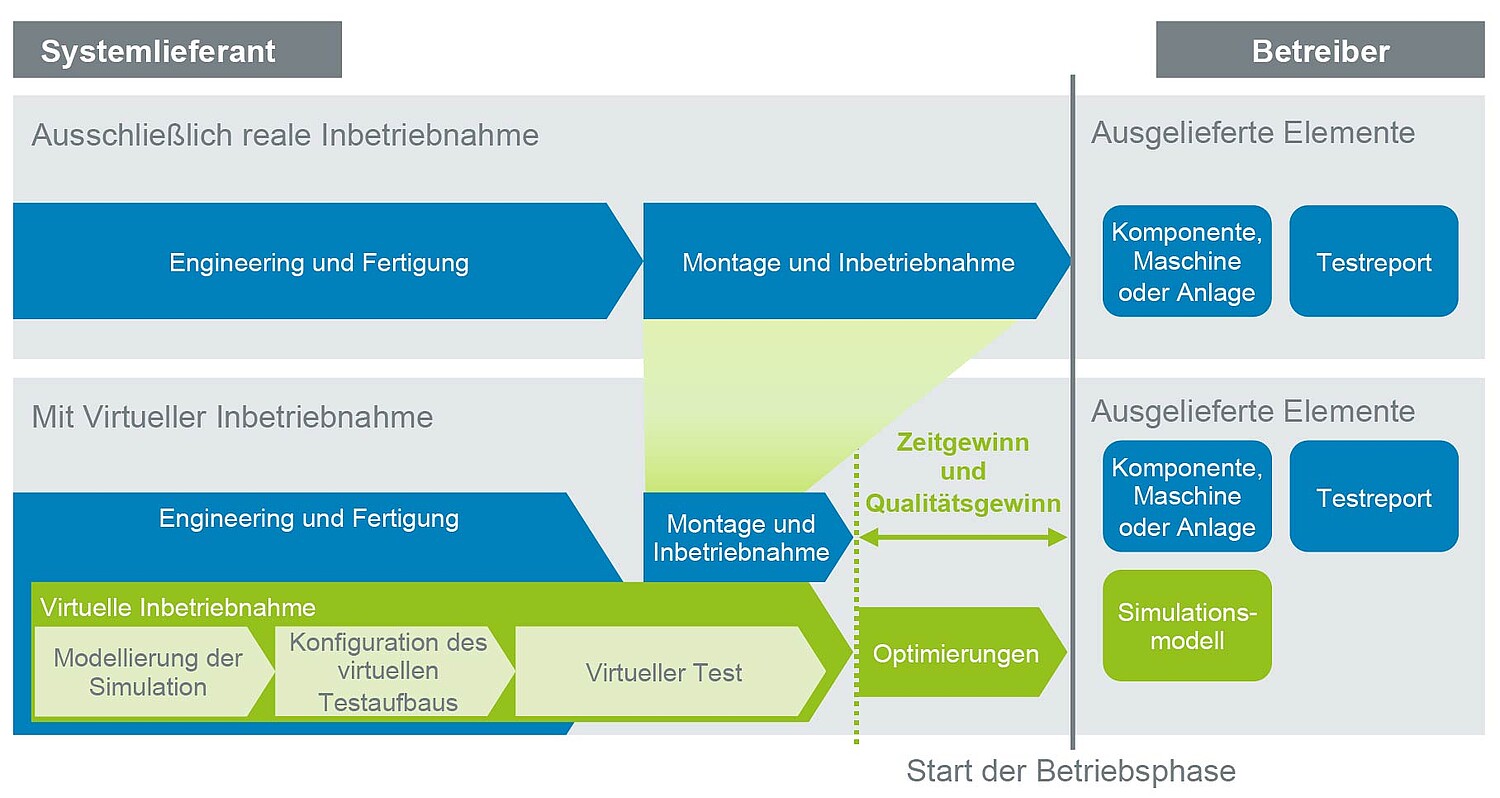Virtual commissioning
Definition
Virtual commissioning ("VIBN") is the importing and testing of planning data on a computer, the so-called "virtual system" - increasingly also known as "digital twin". Depending on the design of the simulation system, static IBN may be performed, but in any case dynamic IBN. The programs optimized with the help of this mechatronic model are then transferred to the real system (plant, machine, robot). With the help of VIBN, errors are detected and eliminated at an early stage of development. Additional work and costs on the real system can thus be avoided from the outset.
The most important component of the virtual commissioning is the 3D simulation, which reproduces the system behavior 1:1. From individual systems (machine, robot) to the entire factory ("digital factory"), everything can be mapped. In this way, even complex interrelationships with regard to material flow and robot control can be reproduced, making it possible to optimize the entire production planning. Virtual commissioning is now firmly established in many companies.
With the help of VIBN, the interaction of mechanics, electrics and software is significantly improved - even before the actual commissioning on site. The quality of delivery is thus increased immensely, and incalculable time losses during real commissioning at the customer's site can be avoided. With a virtual commissioning set up in the early development phase, commissioning times are shortened, development and realization efforts are reduced, and process and product quality are ensured. Production costs are effectively reduced. Excursus: Control levels of VIBN
The virtual commissioning ("VIBN") of machines and plants in production has a high benefit, if it is used correctly and some prerequisites are fulfilled. Development and commissioning times are shortened, and a significant increase in production efficiency is achieved.
VIBN is recommended, for example, when a machine has very complex processes or the time window for commissioning the real plant is very narrow. It is also worthwhile if expensive materials have to be used to test a machine. In addition, downtimes can be reduced when expanding or converting existing plants, which ultimately leads to more security in project planning.


